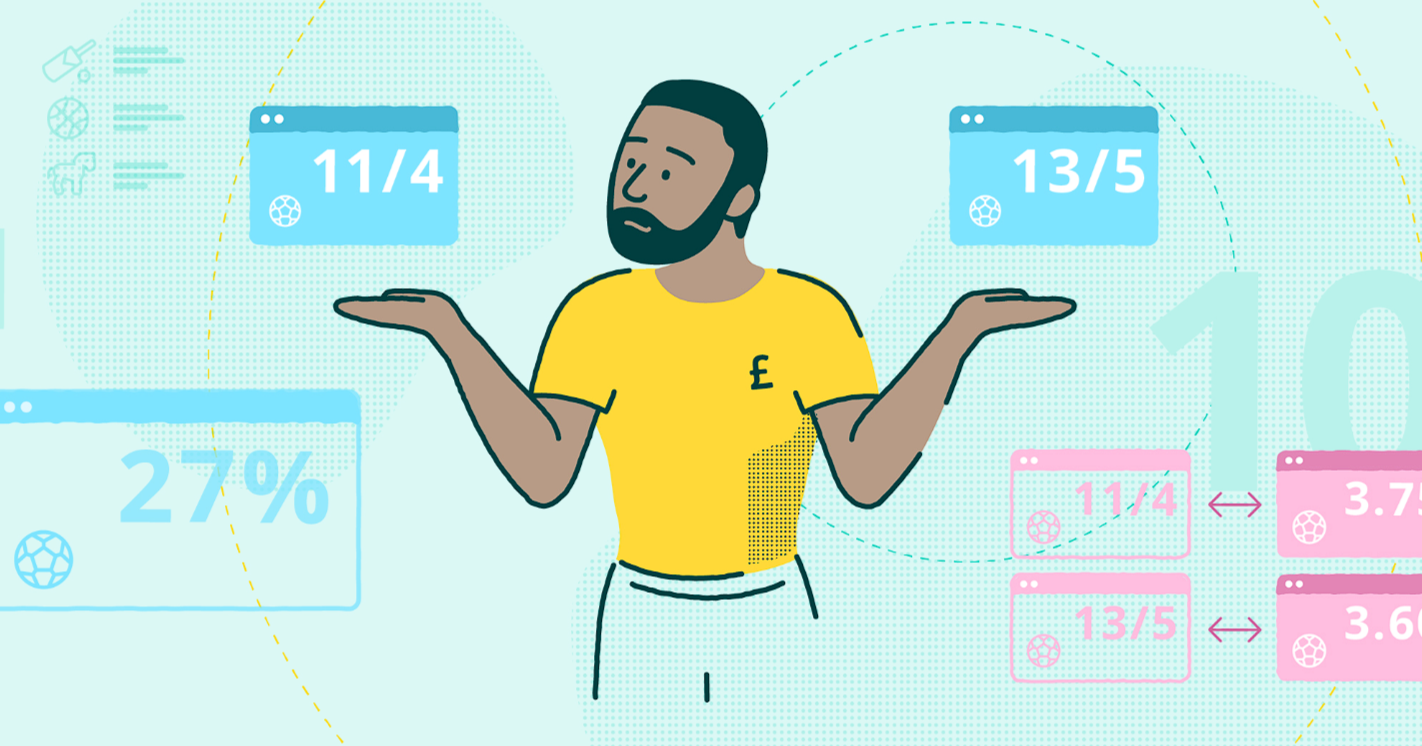Understanding betting odds is fundamental for any bettor looking to make informed decisions and maximize their winnings. Whether you are a seasoned bettor or just starting out, grasping the basics of betting odds can significantly enhance your betting experience. This guide will walk you through the essential concepts of betting odds, including different formats, how to read them, and how to calculate potential winnings.
Understanding Betting Odds
Betting odds represent the probability of an event occurring and the potential return on a bet. They are expressed in various formats, each with its unique way of representing the likelihood of an outcome. Understanding these formats is crucial for making informed betting decisions.
Types of Betting Odds
Betting odds come in three primary formats: fractional, decimal, and American. Each format has its advantages and is used in different regions of the world.
Fractional Odds
- Format: Expressed as a fraction, such as 5/1 or 3/2.
- Interpretation: The first number (numerator) represents the potential profit, while the second number (denominator) represents the stake.
- Example: If the odds are 5/1, for every $1 you bet, you will win $5 in profit.
Decimal Odds
- Format: Expressed as a single number, such as 2.50 or 3.00.
- Interpretation: This number represents the total return (stake + profit) for a $1 bet.
- Example: If the odds are 2.50, for every $1 you bet, you will receive $2.50 in total return, including your initial stake.
American Odds
- Format: Expressed as positive or negative numbers, such as +200 or -150.
- Interpretation: Positive odds indicate the underdog and show the potential profit for a $100 bet. Negative odds indicate the favorite and show the amount needed to bet to win $100.
- Example:
- Positive Odds: +200 means you will win $200 for every $100 bet.
- Negative Odds: -150 means you need to bet $150 to win $100.
How to Read Betting Odds
Reading betting odds accurately is essential for understanding the potential return on your bets. Here’s how to read each format:
Reading Fractional Odds
- Identify the Numerator and Denominator: The numerator represents the potential profit, and the denominator represents the stake.
- Calculate the Profit: Divide the numerator by the denominator and multiply by your stake to find the profit.
- Total Return: Add the profit to your initial stake to find the total return.
- Example: Odds of 5/1.
- Profit: (5/1) * $10 = $50
- Total Return: $50 (profit) + $10 (stake) = $60
Reading Decimal Odds
- Identify the Odds: The decimal odds represent the total return for a $1 bet.
- Calculate the Profit: Subtract 1 from the decimal odds and multiply by your stake to find the profit.
- Total Return: The decimal odds already represent the total return.
- Example: Odds of 2.50.
- Profit: (2.50 – 1) * $10 = $15
- Total Return: $25
Reading American Odds
- Identify Positive or Negative Odds: Determine if the odds are positive (underdog) or negative (favorite).
- Calculate the Profit:
- Positive Odds: Divide the odds by 100 and multiply by your stake.
- Negative Odds: Divide 100 by the odds and multiply by your stake.
- Total Return: Add the profit to your initial stake to find the total return.
- Example:
- Positive Odds: +200
- Profit: (200/100) * $10 = $20
- Total Return: $20 (profit) + $10 (stake) = $30
- Negative Odds: -150
- Profit: (100/150) * $150 = $100
- Total Return: $100 (profit) + $150 (stake) = $250
- Positive Odds: +200

Calculating Potential Winnings
Calculating potential winnings involves understanding the odds format and applying the appropriate calculations. Here’s a step-by-step guide for each format:
Calculating Winnings with Fractional Odds
- Identify the Odds: For example, 5/1.
- Calculate the Profit: (5/1) * $10 = $50.
- Total Return: $50 (profit) + $10 (stake) = $60.
Calculating Winnings with Decimal Odds
- Identify the Odds: For example, 2.50.
- Calculate the Profit: (2.50 – 1) * $10 = $15.
- Total Return: $25.
Calculating Winnings with American Odds
- Identify the Odds: For example, +200 or -150.
- Calculate the Profit:
- Positive Odds: (200/100) * $10 = $20.
- Negative Odds: (100/150) * $150 = $100.
- Total Return:
- Positive Odds: $20 (profit) + $10 (stake) = $30.
- Negative Odds: $100 (profit) + $150 (stake) = $250.
Converting Between Odds Formats
Sometimes, you may need to convert odds from one format to another to compare them easily. Here’s how to convert between the different formats:
Converting Fractional to Decimal
- Divide the Numerator by the Denominator: For example, 5/1.
- Add 1: (5/1) + 1 = 6.00.
Converting Decimal to Fractional
- Subtract 1: For example, 2.50 – 1 = 1.50.
- Convert to Fraction: 1.50 = 3/2.
Converting American to Decimal
- Positive Odds: (200/100) + 1 = 3.00.
- Negative Odds: (100/150) + 1 = 1.67.
Converting Decimal to American
- Positive Odds: (2.50 – 1) * 100 = +150.
- Negative Odds: 100 / (1.67 – 1) = -150.
Common Betting Odds Terms
Understanding common betting odds terms can help you navigate the world of sports betting more effectively. Here are some key terms to know:
- Implied Probability: The probability of an event occurring as implied by the odds.
- Moneyline: A bet on the outright winner of a game or event.
- Point Spread: A bet on the margin of victory, where the favorite must win by more than the spread.
- Over/Under: A bet on whether the total points scored in a game will be over or under a predetermined number.
- Parlay: A bet that combines multiple bets into one, where all individual bets must win for the parlay to be successful.
Conclusion
Understanding betting odds is crucial for making informed betting decisions and maximizing your winnings. By grasping the different formats, learning how to read and calculate odds, and converting between formats, you can enhance your betting experience and increase your chances of success. Whether you are a seasoned bettor or just starting out, mastering the basics of betting odds will give you a competitive edge in the world of sports betting.




